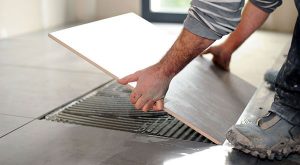
Photo source: https://bit.ly/2HBT7iT
Moving house can be a long and tedious process, but the day that you finally wake up and realise you’re moving into a new property can be incredibly exciting. A new house comes with new adventures, new possibilities and a new place to put down roots, but depending on your situation it can be weeks or months after buying a property before you finally get to move in.
Moving day can be quite complicated, and there is a lot to get done. Delays can only add to any potential stress, so it is important to make sure your move goes as smoothly as possible. Here are some tips to avoid any moving house delays:
Communication
You will speak to many different people while moving house, including estate agents, solicitors. surveyors, removal companies, and more. Filling out any paperwork quickly and replying to any enquiries can really speed up the process of moving.
Make sure you have copies of your ID, bank statements and any planning permission needed throughout the process, so you can be ready to hand anything over when needed. Keeping everyone updated throughout your move means any problems or concerns should be quickly fixed and the whole move should go smoothly.
Book in Advance
Ideally you should start arranging a removals van around four weeks before your moving day. Contact three or four companies and get a consultation with each. They will all provide you with quotes and you can decide which one works best for you.
Once you have that booked you can make any other arrangements you need, such as parking. If you are moving to a house that only has road-side parking, you will have to give notice to anyone it may affect, and let them know a removals van will be parking up for a few hours.
Avoid Exchanging and Completing on the Same Day
Although it may seem like an obvious option and a good thing to do, exchanging and completing on the same day can actually cause problems if you are part of a chain – it only takes one person to be unable to complete for the whole chain to break.
Try and leave a week or two between exchanging and completing, as this should give you enough time to resolve any potential complications that could come up. It’s good to have a bit of breathing space when moving house, as you never know what might happen.
Packing Preparation
One of the key things that will prevent delays on moving day is to have everything packed up and organised. The last thing you want is to be rushing around packing up some last minute items when you have a hundred other things to think about.
Start a month or so before you move, and keep everything as orderly as possible. Chuck out any clutter or take it to a charity shop, and pack a few boxes each night, carefully labelling them and wrapping anything delicate in bubble wrap. Having everything packed and ready to go will be a huge time saver when you get round to moving.
Arrange Child/Pet Care
Even though they are moving with you, children and pets can be quite distracting on moving day, and it can be quite an unsafe environment for them to be in with heavy boxes being carried back and forth to your new home.
Try and arrange for someone to look after them while you move, as this will allow you to concentrate fully on the task at hand and allow them to move into a new house afterwards with all their belongings in place. If you have older children you can find age appropriate tasks to enable them to help out with the move.




 It’s no secret that tiling is a more practical approach for your bathroom floor than paint or carpet. It is one area that experiences more water exposure than others, and unlike carpet, most tiling is able to withstand it.
It’s no secret that tiling is a more practical approach for your bathroom floor than paint or carpet. It is one area that experiences more water exposure than others, and unlike carpet, most tiling is able to withstand it.




